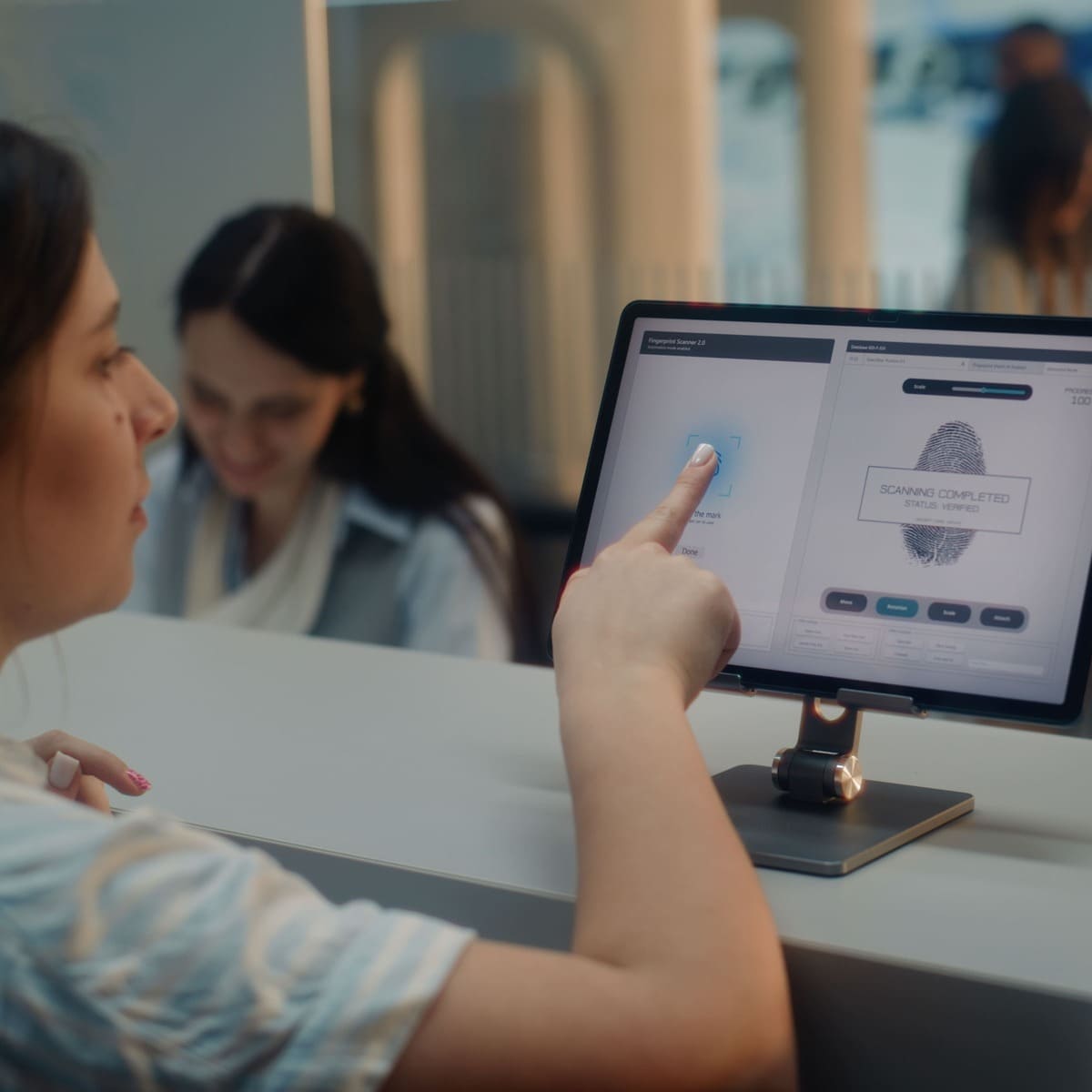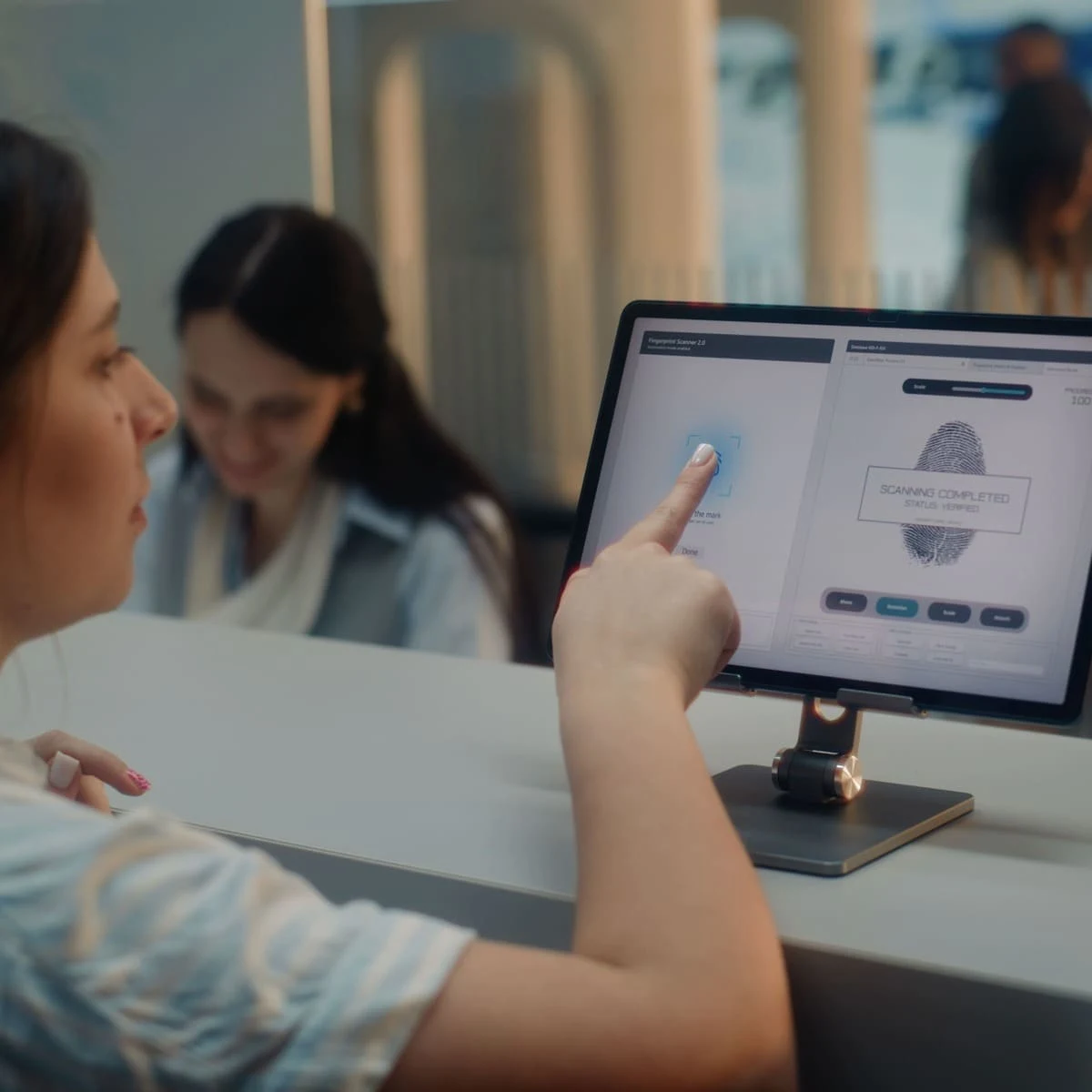
Following in the footsteps of Croatia, which announced only last week that Americans will start getting fingerprinted once landing in the country, it’s now time for the second most popular destination worldwide to impose the same requirement.
Having hosted a record-breaking 94 million tourists last year, only behind France, Spain is the second European country to confirm they are ready to start fingerprinting foreign tourists starting October 12.


Spain’s decision follows the EU’s new ‘EES’ directive, and it will impact millions of travelers arriving in the country from the date of implementation.
We know, it’s all difficult acronyms and confusing terminology, but don’t worry. That’s what Travel Off Path is for: translating all that complex government lingo into easy-to-understand, day-to-day English, without the unnecessary fluff.
So what is the EES all about, and why is Spain (and previously Croatia) suddenly going to such unprecedented lengths to register visitors?
What Does The EES Stand For?


The EES stands for Entry/Exit System, and it’s the European Union’s new border procedure that will entirely replace the decades-old passport stamps.
For many years now, when Americans land in Europe, they have been instructed upon arrival to head to an immigration desk, where they get briefly interviewed regarding the reason for their visit by a border agent, who then assesses whether to let them in or not.
Once a positive decision was made, the border guard would then place an entry stamp on the visitor’s passport.
With the EES, passport stamps will become a thing of the past, as once you enter a European country under the new rules, you will have to provide not only your passport but also your biometric data. More specifically, four fingerprints and a face scan.


According to EU officials, the information will be stored securely for ‘three years’, so on future trips, the process will be far less arduous. Landing in Europe again upon initial registration, all you’ll need to do is scan your face to verify your identity, and the automated gate will open.
Why Has Rollout Been This Complicated?
Although the official launch date of the EES is October 12, several European countries are not yet ready to switch to the new digital border.
Only a handful, such as Croatia and now Spain, have confirmed that they have the necessary infrastructure in place to start the biometric registration of visitors from the launch date. At the same time, several others have reported implementation setbacks and may not be able to enforce the EES until April 2026 at the latest.


That is because the EU has allowed its member states a ‘grace period’ of 6 months, during which EES implementation will be gradual, and the fingerprinting won’t be mandatory.
Be that as it may, Spain has already confirmed it’ll be among the first to try the new system.
Spain Ready To Roll On October 12
As seen on a press release published by the Spanish Ministry of the Interior, the Iberian country’s adoption of EES will take place in three stages:
- Airports – beginning tests on October 12, specifically at Madrid-Barajas Airport
- Land borders – mainly concerning Gibraltar, a British territory in the south of Spain, and the Spanish exclaves of Ceuta and Melilla, on the coast of Morocco, at a later date
- Maritime borders – only when important technical upgrades are completed


The Ministry has not set exact deadlines for the implementation of EES across other major Spanish hubs, such as Barcelona, Mallorca, Ibiza, or Málaga. However, given that the final deadline set by the EU itself is April 10, 2026, we have a rough idea of the dates we’re working with.
So how will it work in practice?
How Will The EES Registration Work?
When you fly into Madrid on October 12, instead of being guided to an immigration booth for non-Europeans to undergo border control, you’ll be directed to an EES kiosk.
Think of it as a ‘check-in’, ‘check-out’ kiosk:


You’ll first scan your passport and wait for the information to pop up on the screen. Once it does, it will ask for your fingerprints and a photo. The next step is to answer a few quick security questions on the screen.
It is designed to be as straightforward a process as possible, and it is meant to reduce wait times at passport check, which, at certain times of the day, could stretch for hours depending on the influx of new arrivals.
How Is The EES Different From ETIAS?
There’s also a lot of confusion regarding another acronym that many use interchangeably with EES, yet has a completely different meaning: the ETIAS.


As we pointed out previously, the EES and ETIAS are entirely separate entities:
- EES: the physical registration at the border. It will involve providing your fingerprints and other biometric information, and it looks set to replace manual passport stamps.
- ETIAS: a digital entry permit that you’ll need to apply for before flying to Europe. It costs 20 Euros and it will only launch in late 2026.
Both are mandatory, and that’s why the rollout (and its communication to the wider public) has been suboptimal at best.
To sum it up, the EES is launching already next month, and as we don’t know right now what is the full list fo EU entry points where it will be enforced, you should be prepared for a new entry process regardless. In Madrid-Barajas and in Croatia, the EES rollout on October 12 is confirmed.
As for the ETIAS, you don’t need to concern yourself with it until the last quarter of 2026 at the earliest.
This is the first, concrete step in a major shift for European travel. To stay on top of this and any other changes, the best tool is our 1 Minute Trip Check, which gives you the real-time entry requirements for any destination.
Vinicius Costa
Vini, our senior lead writer at Travel Off Path, has over 60+ countries under his belt (and currently weaving tales from Paris!), and a knack for turning off-the-beaten-path experiences into informative stories that will have you packing your bags.
The Travel Off Path Advantage: Your Travel Toolkit
Subscribe To Our Latest Posts
Enter your email address to subscribe to Travel Off Path’s latest breaking travel news, straight to your inbox.
Please visit:
Our Sponsor
